Strasbourg: 21/22 Season – Ligue 1 Overachievers?
Racing Club de Strasbourg Alsace were formed in 1906 and have been a professional football club since 1933. The club has had a fairly chequered history in recent times, being relegated to the fifth tier of French football after liquidation.
Les Bleu et Blanc rebuilt themselves and secured promotion to Ligue 1 in 2017, where they have remained ever since. In May 2021 the club hired Julien Stéphan to take the reins of the first team and since then, they have gone from strength to strength.
Considered a perpetual yo-yo club by many, always favourites for relegation, Stéphan has transformed Strasbourg into a well-oiled machine who find themselves in fifth place after a season that no-one could have predicted.
Julien Stéphan was highly praised during his tenure at Rennes, he led them to their first trophy in 48 years with a victory over PSG in the 2019 Coup de France. The Rennes native gave plenty of first team football to young starlets such as the now Real Madrid midfielder Eduardo Camavinga and Raphinha (who is impressing the likes of Barcelona and Bayern Munich with his performances for Leeds United).
MK Dons and Scott Twine: A Club and a Player Ready for the Next Step
He also demonstrated shrewd transfer business, the signing of Martin Terrier from Lyon being a prime example, having been told he had no future at OL, Rennes and Stéphan swooped in with a €12 million bid which was quickly accepted. Terrier has gone on to become a regular at Rennes, scoring 30 goals in 70 league appearances so far.
Throughout his time at Strasbourg, Stéphan has typically opted to employ a 5-3-2 or a 3-5-2 depending on how you wish to view it. The team usually lines up as so:
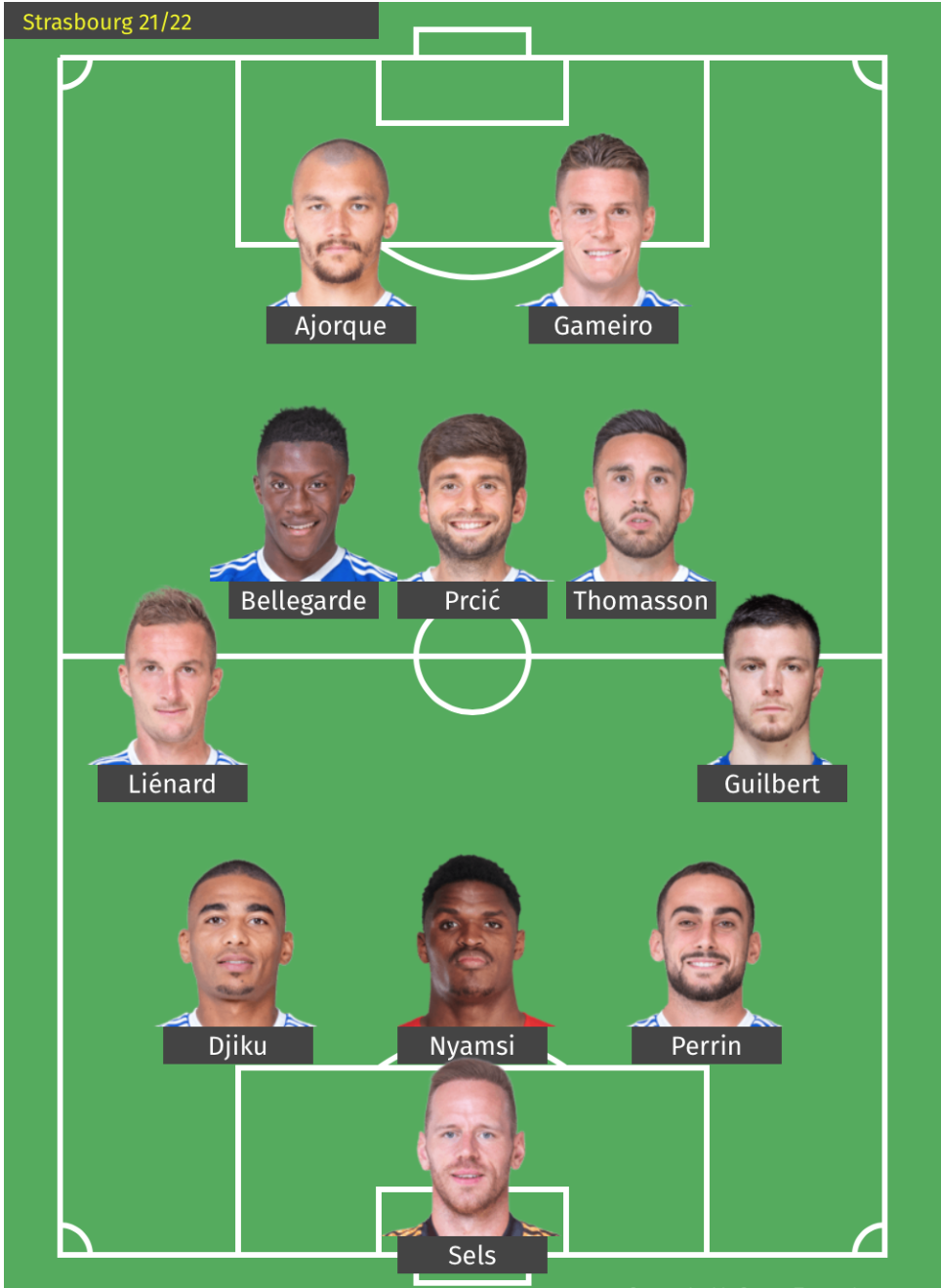
Strasbourg’s three centre backs give great defensive stability, the wing backs will often drop back to form a mid-block back 5 when in the defensive phase of play. The wing backs are there to provide attacking width and very often find themselves being the outlet for the transition into attack.
The central player in the midfield three (usually Prcić or Bellegarde depending on personnel) will sit deeper and act as a single pivot who will shield the back three and play progressive passes during transition. The other two midfielders are then able to join the attacking phase of play and provide support to the two strikers.
The formation can be seen in game below, with the wingbacks highlighted to demonstrate the width they provide and the central player in the midfield three (in this image Bellegarde) dropping back to act as a single pivot.
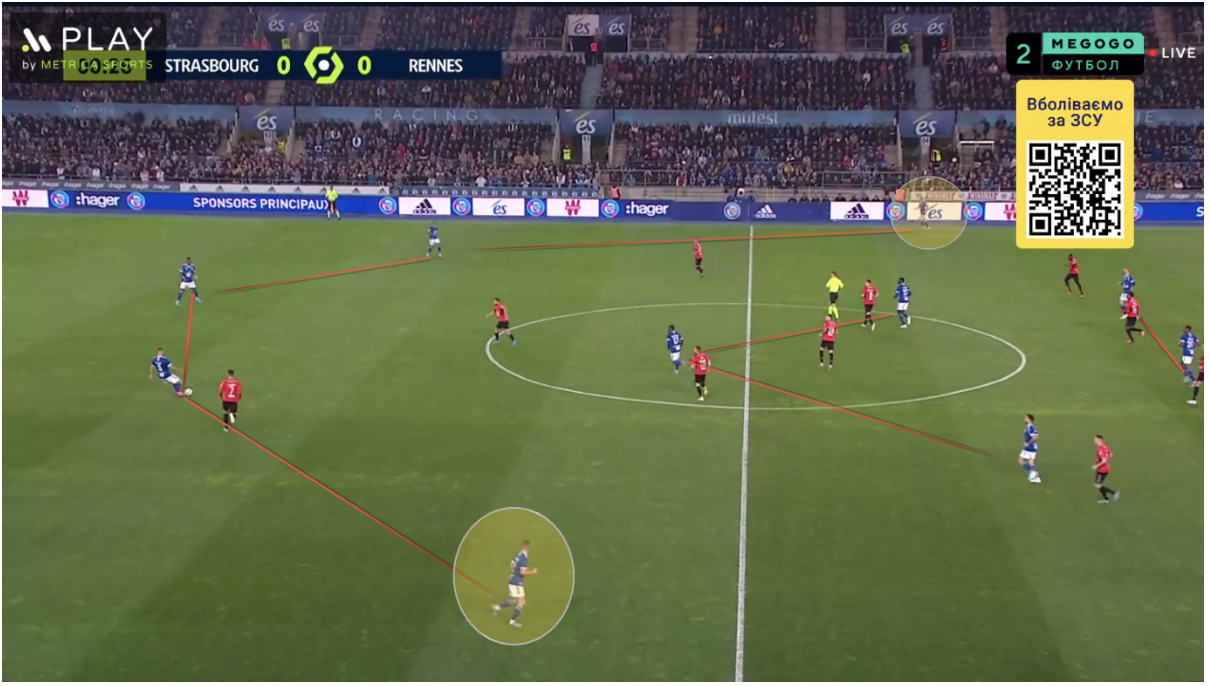
The flat back five is seen below. This allows Strasbourg to stay compact and follow any off-the-ball runners. They have faced 271 shots during this season which is one of the lowest amounts of shots faced (only Rennes and Marseille have lower). This translates as 10.7 shots faced per 90 in contrast the league average of 11.8 with Strasbourg facing 3.30 Shots on Target per 90 compared to the Ligue 1 average of 4.23 according to soccerment.
These stats show how strong Strasbourg’s defensive performances have been, not allowing opponents create shooting opportunities. In terms of Expected Goals Against, Julien Stéphan’s team have an open play xGA of 30.2, having actually conceded 28 goals, whilst from set-pieces Strasbourg’s xGA is 9.4, with 6 conceded.
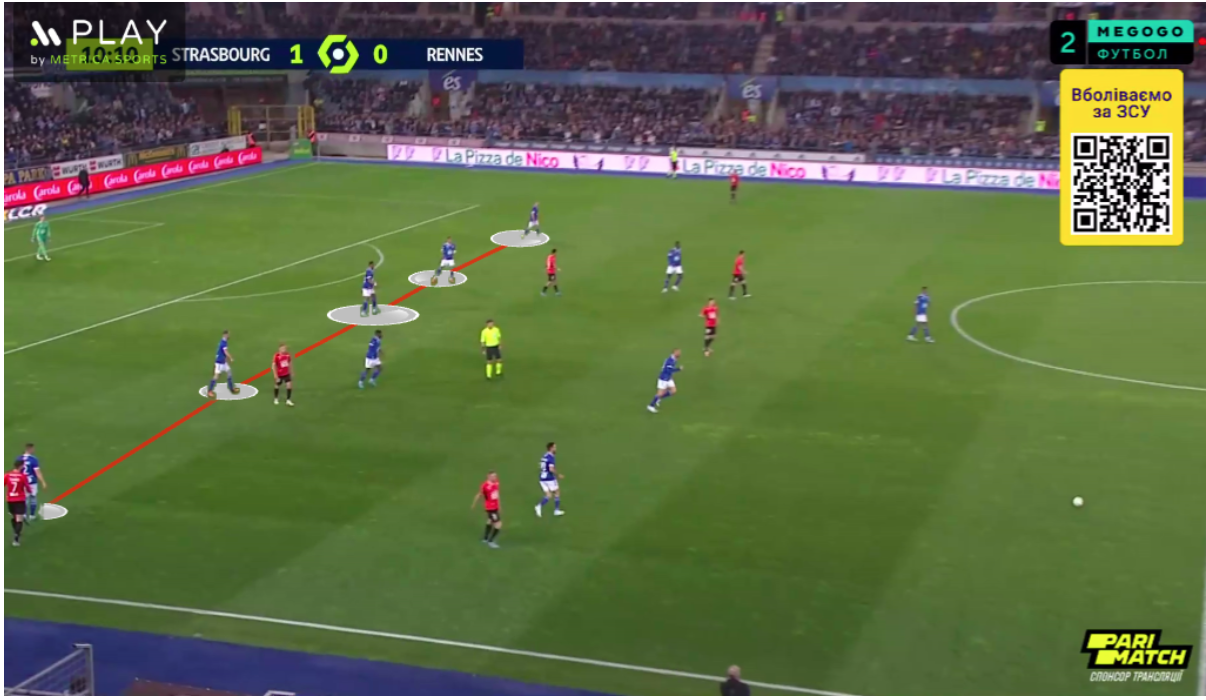
They do not typically press high by pressing the centre backs, rather they like to press out wide and, in the midfield, as demonstrated below. When at home they will press slightly higher, wanting to make use of home advantage and confidence from fans likely being key components as to why Les Bleu et Blanc press more when at home.
Strasbourg have a fairly low Passes Per Defensive Action with 12.2, this has led to 359 high turnovers being forced which is the highest in the league. 56 of these turnovers have ended with a shot, 7 of them ending with a goal. This is a good demonstration of how Strasbourg effectively press and then use it as an attacking weapon.
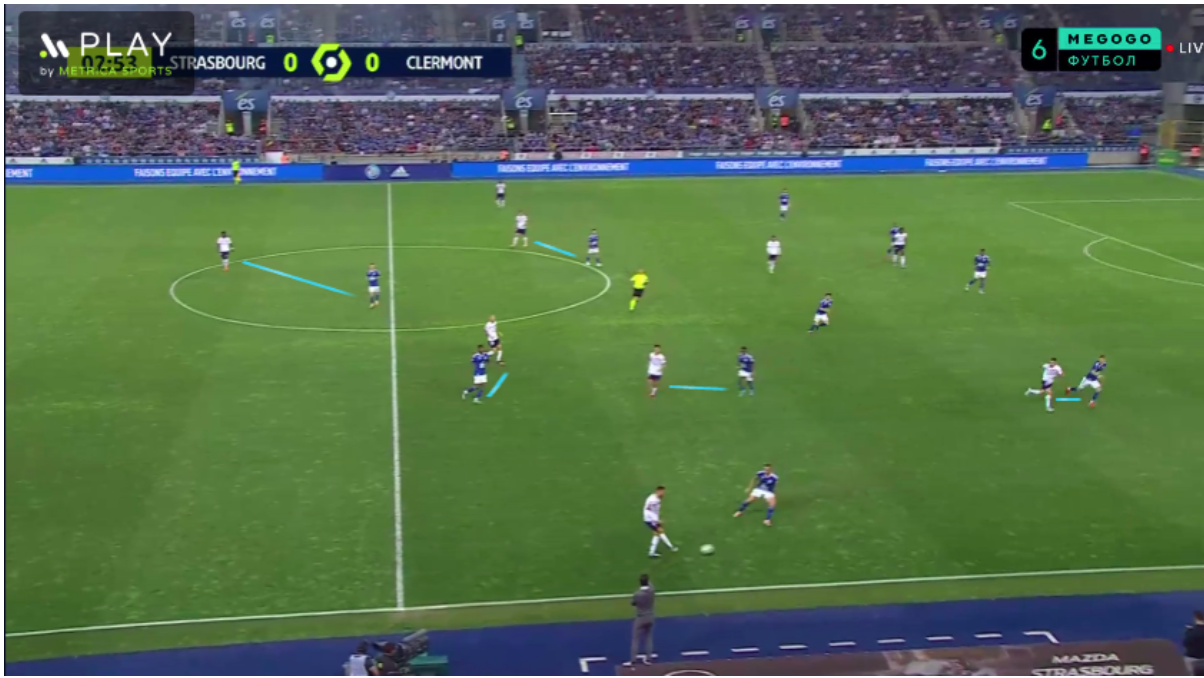
Strasbourg pressing 2021/22, successful presses – blue. Unsuccessful presses – red.
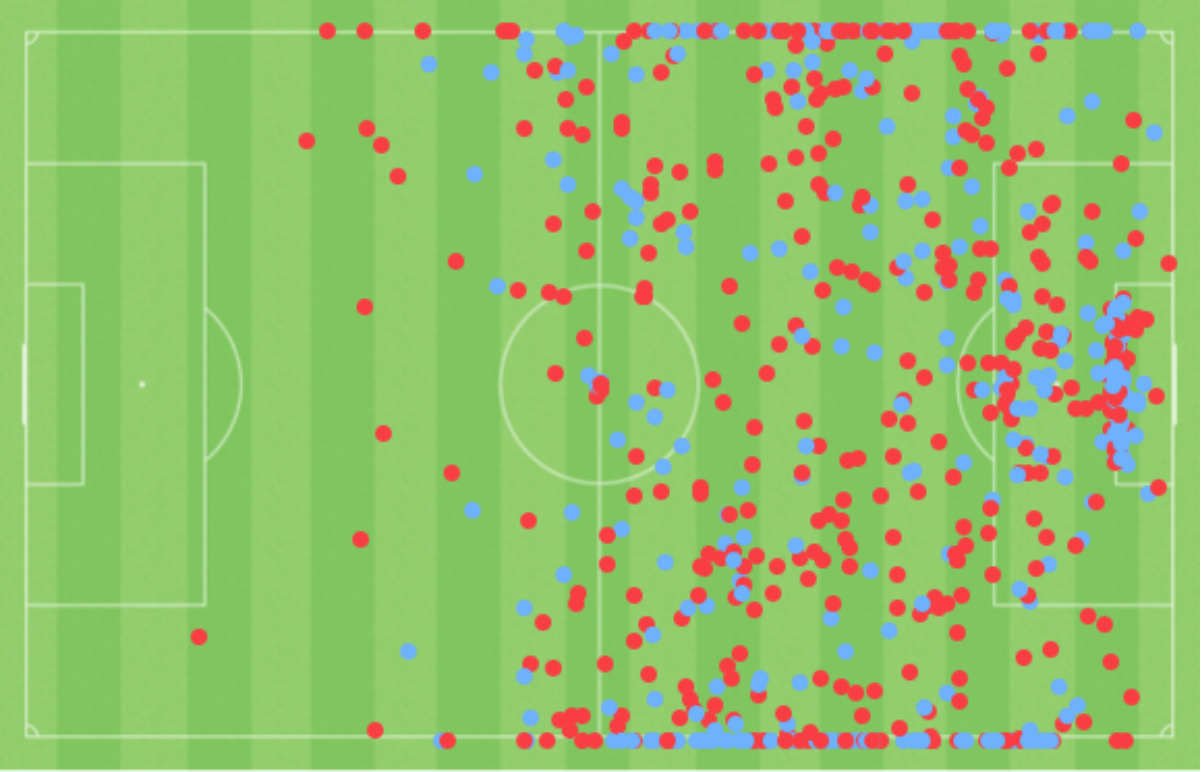
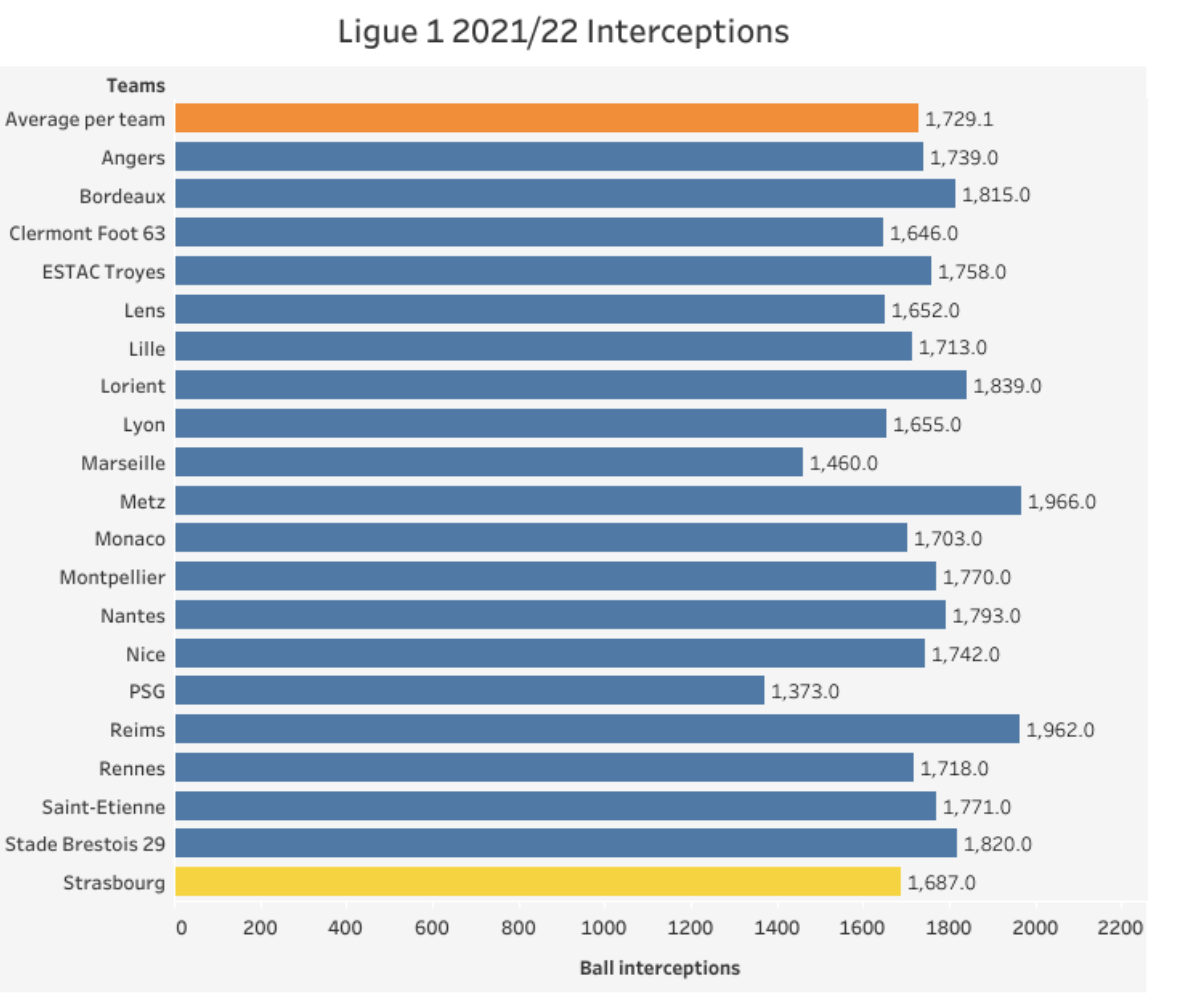
Statistically, this translates to 1687 interceptions being made throughout the season, below average with most of them coming in the defensive third. Strasbourg’s typical central defensive trio of Nyamsi, Djiku and Perrin have made a combined total of 549 interceptions this season.
This is a good indication that Strasbourg’s defenders don’t go to ground and commit rash fouls, giving away opportunities to opponents. Stéphan’s mid-block allows them to see the play in front of them and anticipate when to make an interception to halt the opponents’ attack.
Strasbourg’s Team Inception
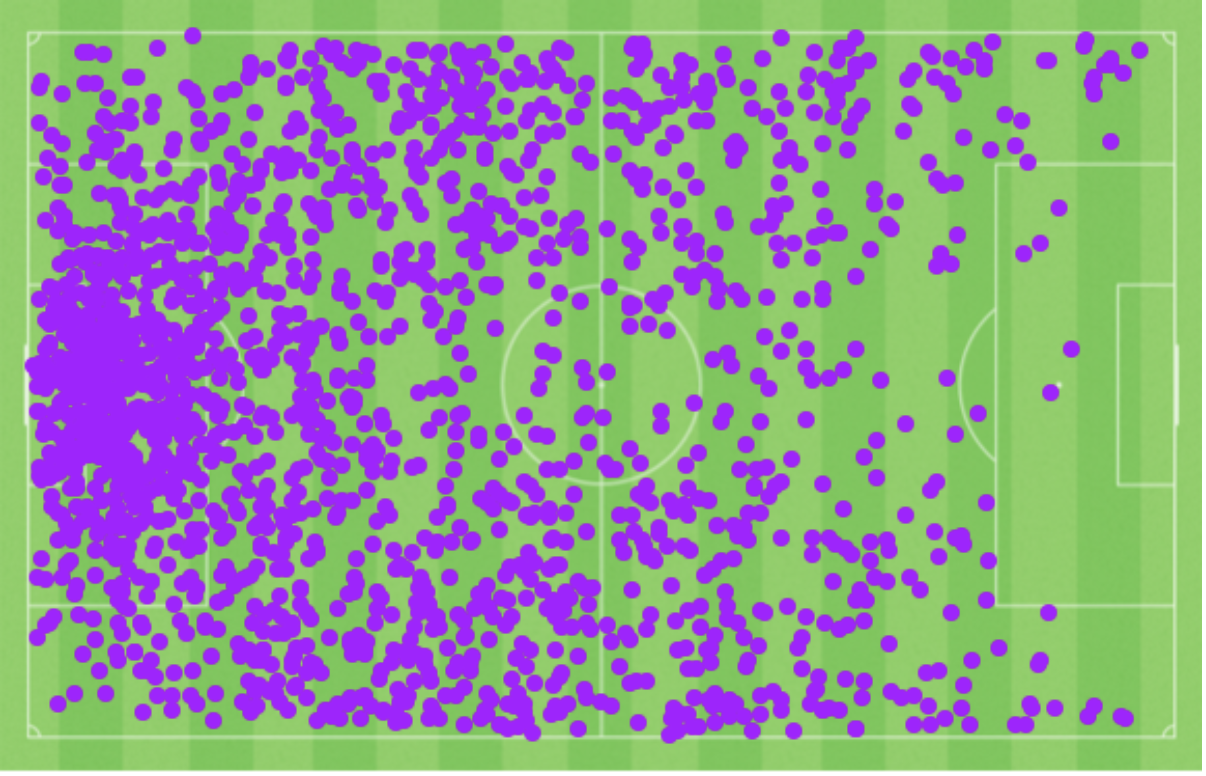
Gervino Nyamsi, Alexander Djiku and Lucas Perrin’s interceptions:
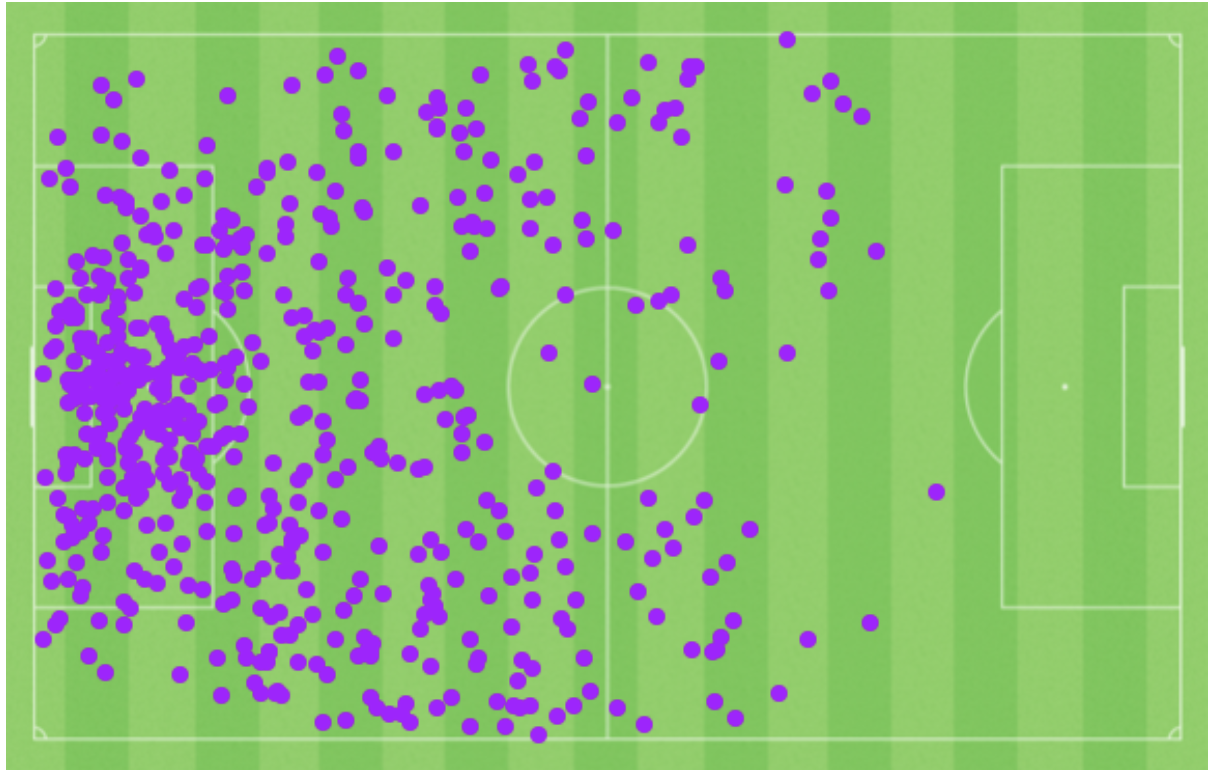
In attack, a common theme of Strasbourg’s attacks is to overload one side of the pitch which creates space on the opposing wing. This then enables the wingback on that side to receive the ball with plenty of time to assess whether to run at the defence or attempt a cross.
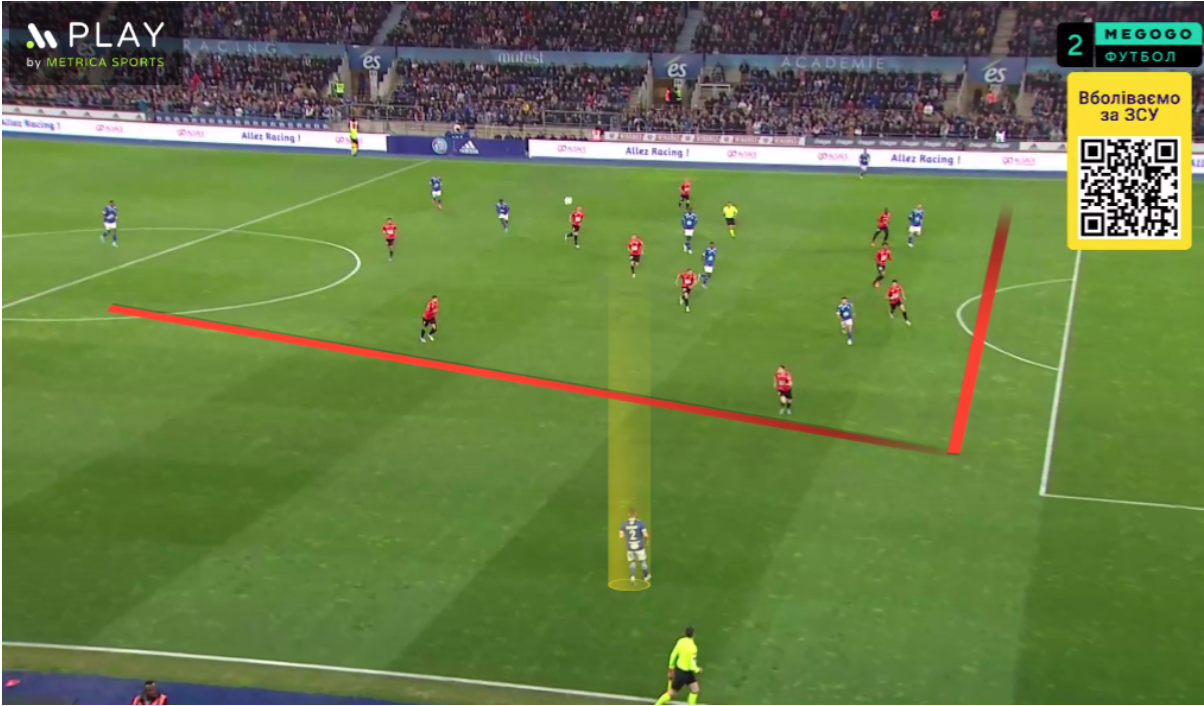
On loan Aston Villa right wing back, Frederic Guilbert leads the club charts for chances created per 90 while left wing back Dimitri Lienard is second. This is a clear demonstration of how Strasbourg utilise the wingbacks in order to create attacking opportunities.
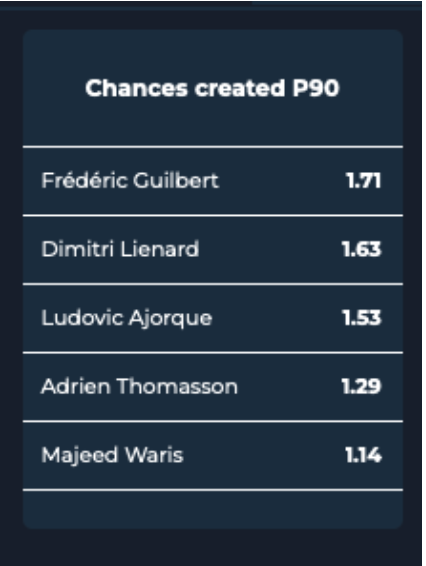
As the wing backs push up, it is the central player in the midfield three that stays deeper to provide defensive cover, as shown in the image above. Sanjin Prcic who is usually deployed in this role leads the number of ball recoveries made per 90 with 7.5.
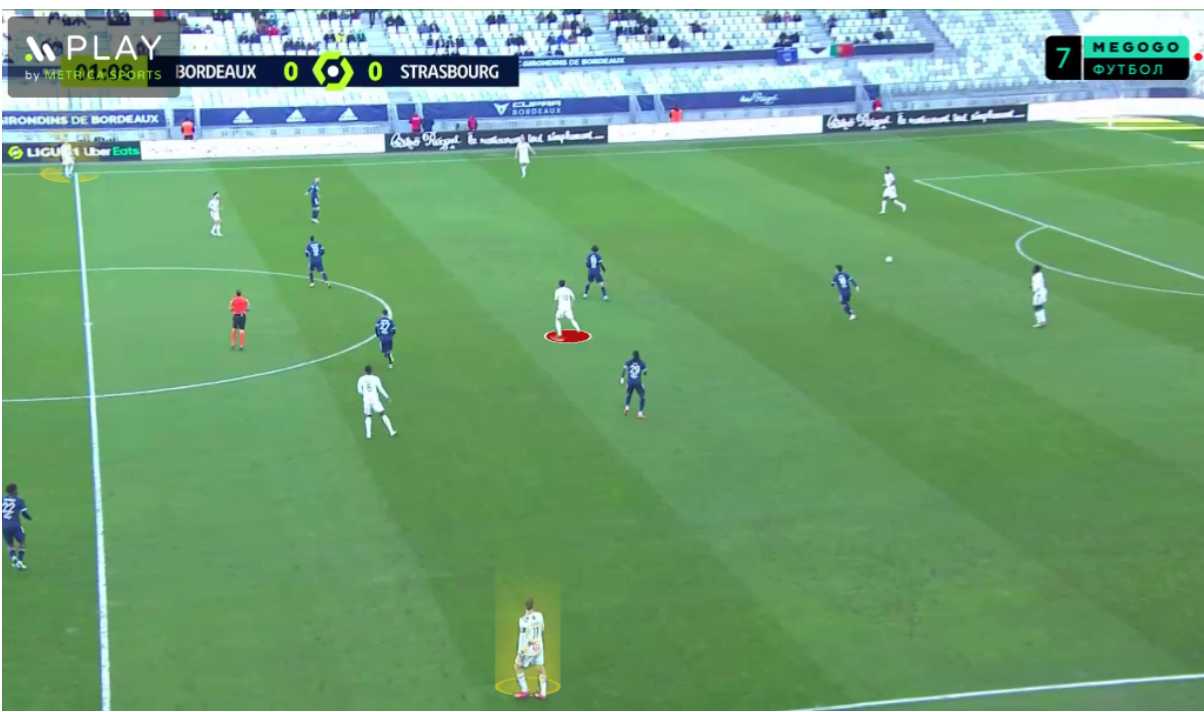
Sanjin Prcic: Ball recoveries – blue. Interceptions – purple. Free ball pick-ups – orange.
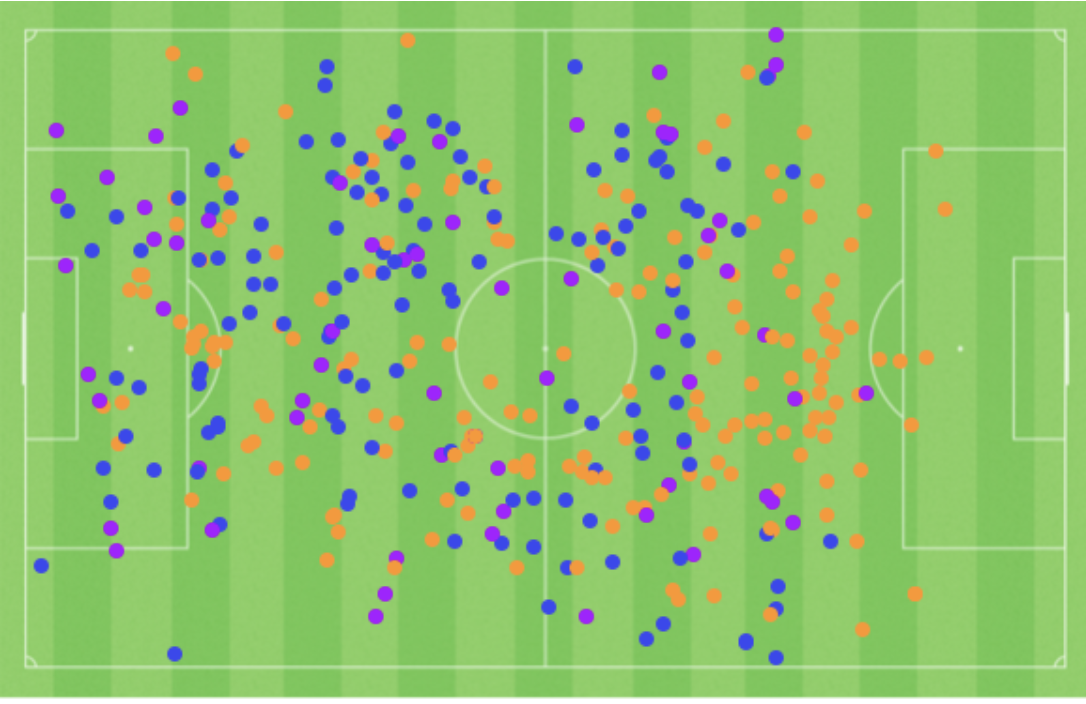
Strasbourg have used very intuitive off the ball movement this season, something Rennes also did well under Stéphan. In the image below Kevin Gameiro can be seen moving towards the ball allowing Ludovic Ajorque space to run in behind.
Alternatively, Ajorque’s height of 197cm means that very often he will be the one to drop deep and look to provide a flick on for the on running Gameiro and Adrien Thomasson as seen via his heat map below.
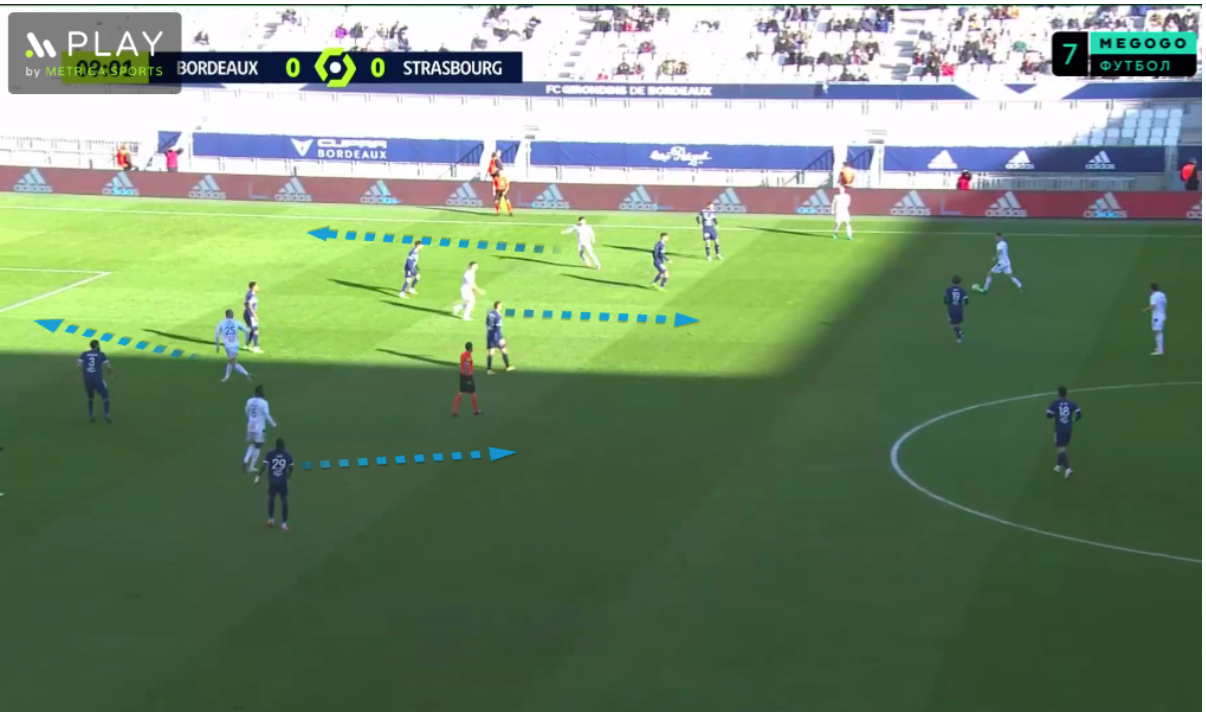
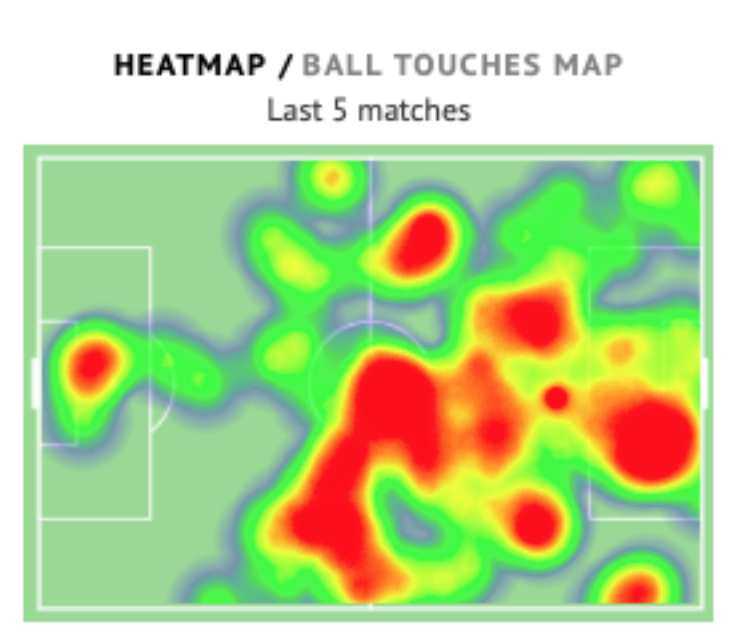
Ludovic Ajorque’s heat map
In possession, Strasbourg typically have a sequence time of 8.59 seconds, which is the lowest of the top six teams and one of the lowest in Ligue 1. With an average passes per sequence of 3.31, it’s fair to say they often opt for medium or long passes to attack quickly and efficiently rather than a short passing build-up play through the lines.
The team has an xG of 39.8, having actually scored 37 goals, while this shows a slight underperformance it is not drastic enough to warrant a full investigation into it.
Julien Stéphan has made excellent use of set pieces, his team have netted 13 times from these situations which is the second-highest in the league. The charts below show that Strasbourg primarily use corner attacks or positional attacks to create shooting opportunities.
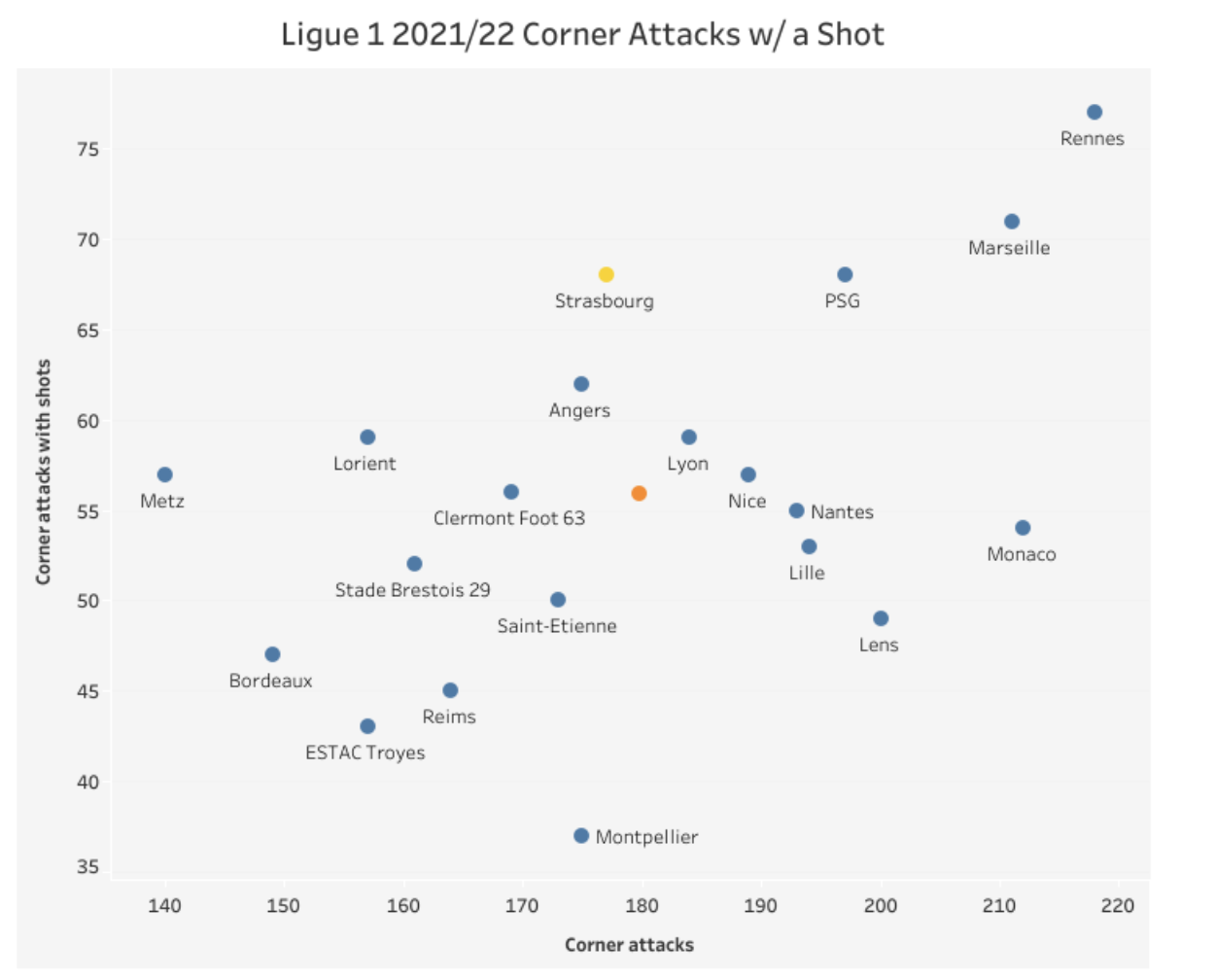
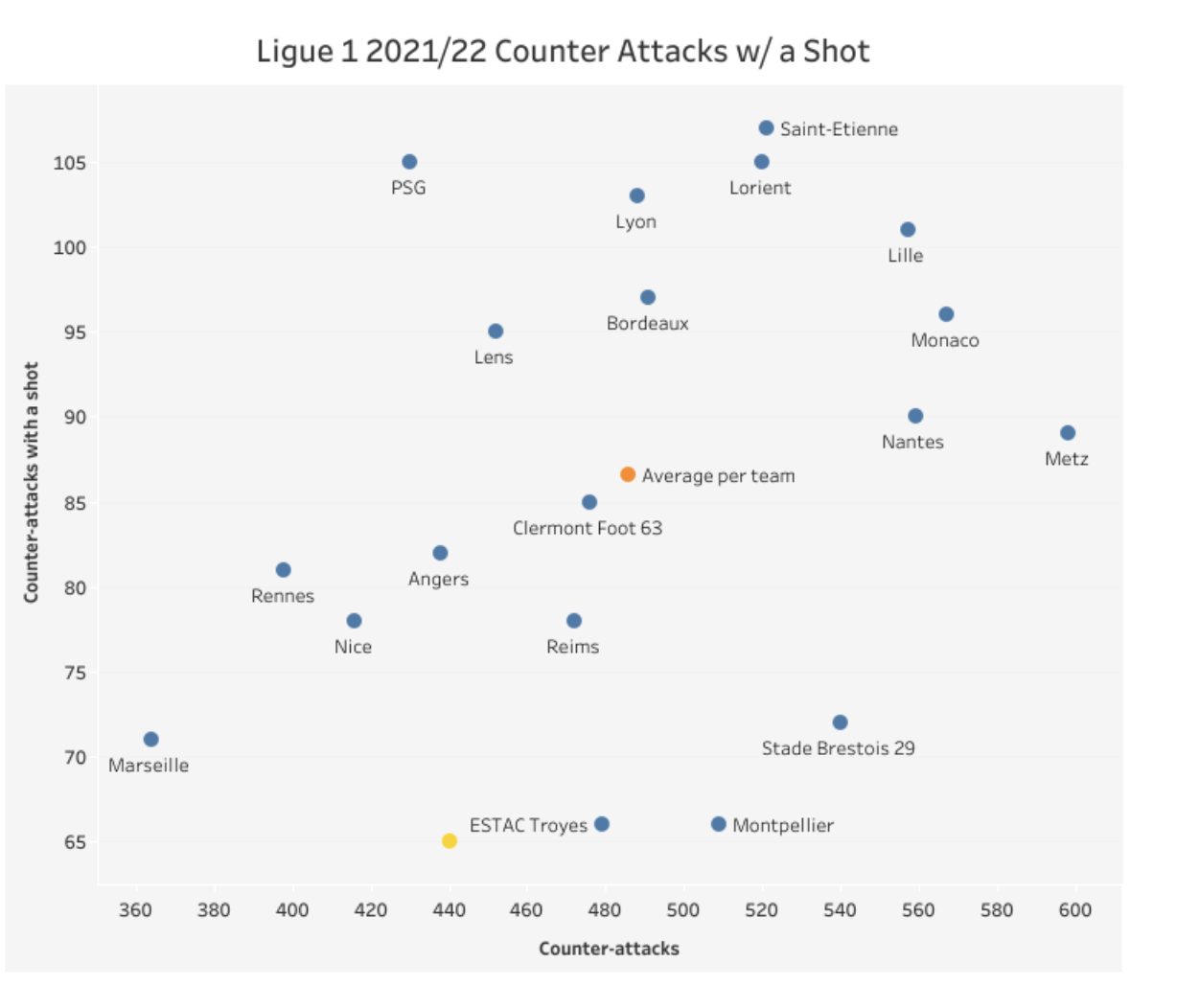
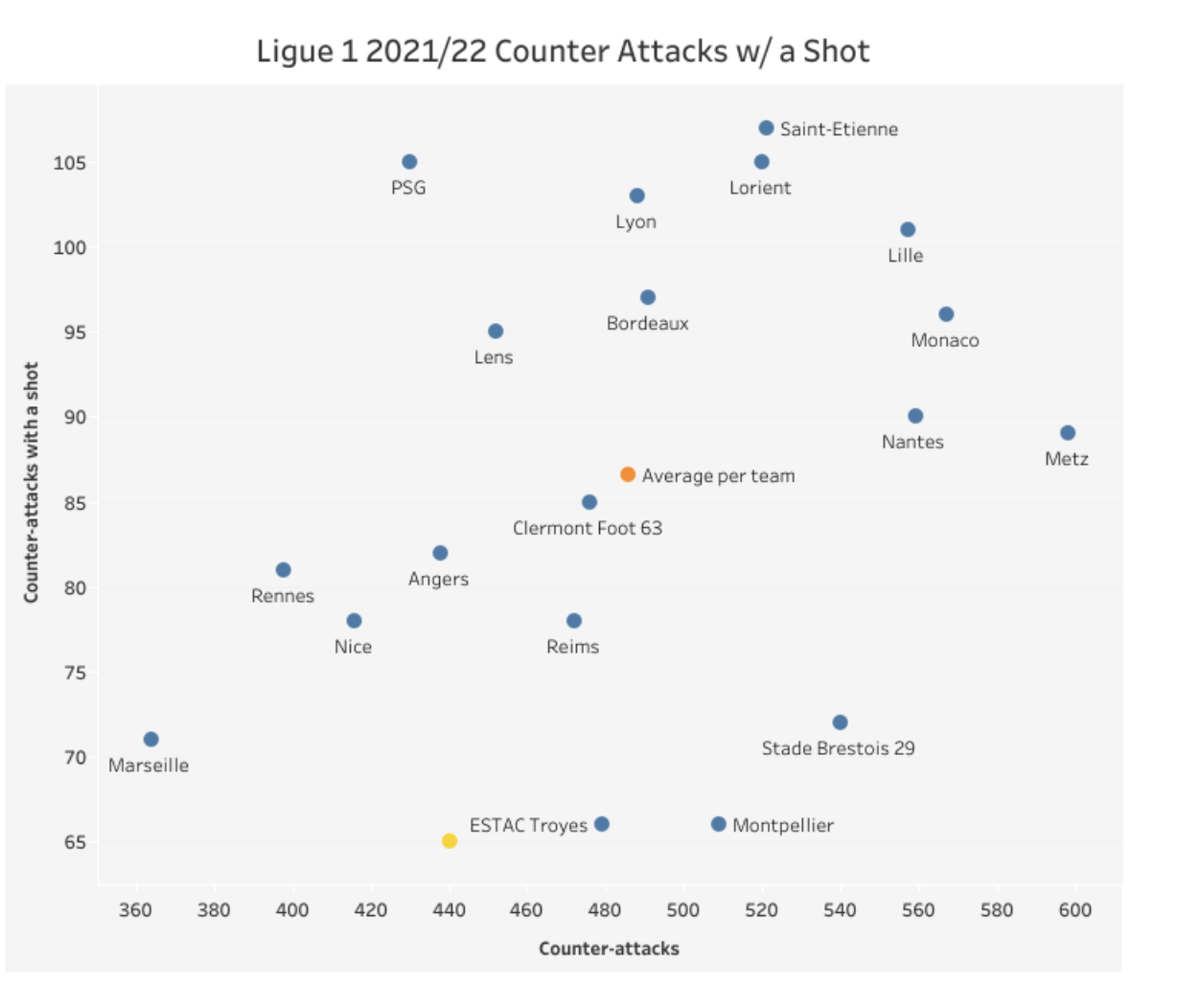
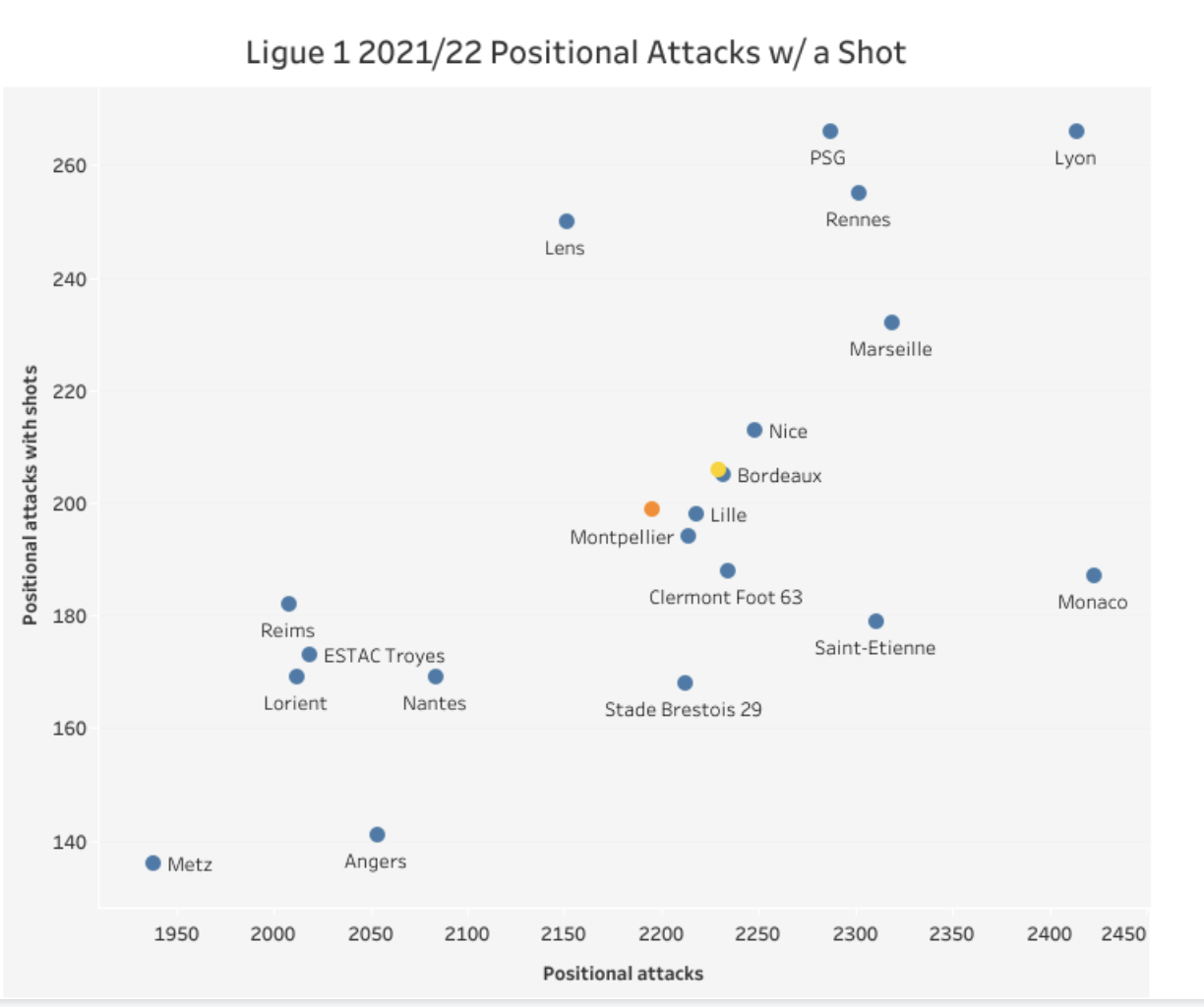
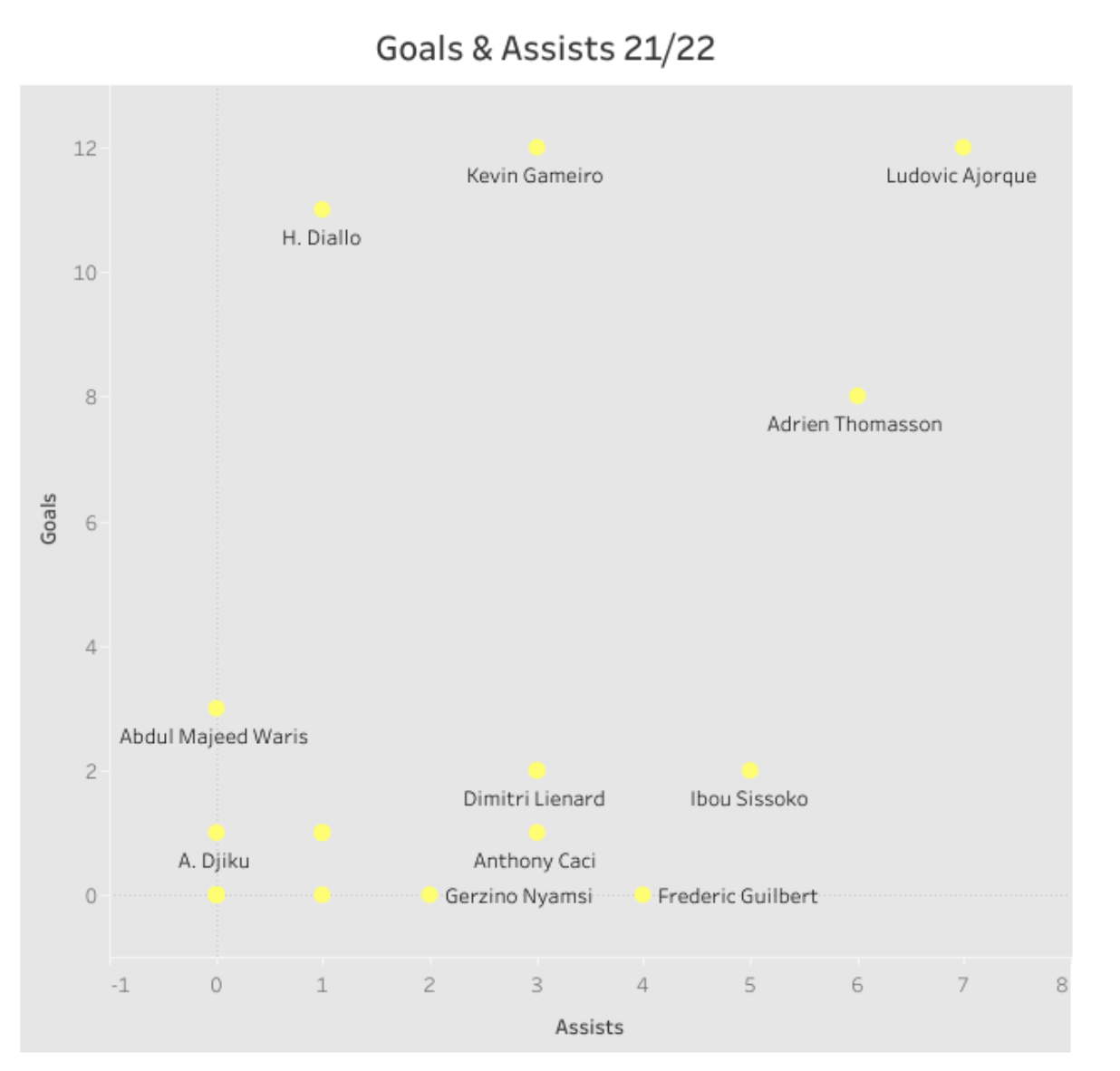
Overall, this season has been a perfect storm for Strasbourg, teams such as last season’s champions Lille have grossly underperformed, Peter Bosz’s Lyon have struggled all season and whilst PSG have won the title it’s fair to say they haven’t been at their best. Julien Stéphan has ensured that his team were primed and ready to take advantage.
Rather than forcing his players to play a specific way that doesn’t suit them, Stéphan has carefully crafted a system to fit the players he inherited which allows them all to play to their strengths. Strasbourg are an incredibly fluid team, able to adapt to different situations using intuitive and effective off the ball movement and swift transitions into the attacking phase of play.
There is no real stand out player for Strasbourg, they operate as a cohesive unite who are all willing to work hard for the team and the manager. Their success this season is a great testament to their tenacity and willingness to follow Julien Stéphan’s direction.
By: @fmbeth94
Featured Image: @GabFoligno / Hugo Pfeiffer / Icon Sport
